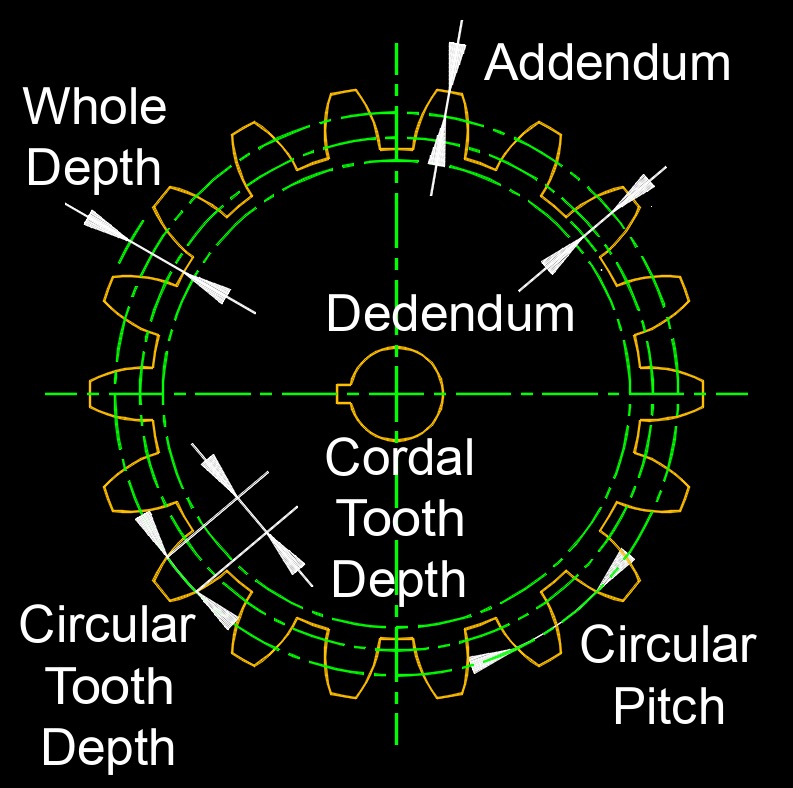Number of Teeth
Number of Teeth formula |
||
|
\( n_t \;=\; DP \cdot PD \) (Number of Teeth) \( DP \;=\; \dfrac{ n_t }{ PD }\) \( PD \;=\; \dfrac{ n_t }{ DP }\) |
||
| Symbol | English | Metric |
| \( n_t \) = number of teeth | \(dimensionless\) | \(dimensionless\) |
| \( DP \) = dimetrical pitch | \(in\) | \(mm\) |
| \( PD \) = pitch diameter | \(in\) | \(mm\) |

Number of teeth, abbreviated as \(n_t\), is the number of teeth contained in a gear. The number of teeth on a gear determines its size and in combination with the number of teeth on other gears it meshes with, influences the gear ratio and the overall function of a gear system. The number of teeth affects the gear ratio, which, as mentioned earlier, is the ratio of the rotational speeds of the two gears in mesh. The number of teeth also influences other aspects of gear design, such as the pitch diameter and the module.
Number of Teeth formula |
||
|
\( n_t \;=\; \dfrac{ \pi \cdot PD }{ CP }\) (Number of Teeth) \( \pi \;=\; \dfrac{ n_t \cdot CP }{ P D }\) \( PD \;=\; \dfrac{ n_t \cdot CP }{ \pi }\) \( CP \;=\; \dfrac{ \pi \cdot PD }{ n_t }\) |
||
| Symbol | English | Metric |
| \( n_t \) = number of teeth | \(dimensionless\) | \(dimensionless\) |
| \( \pi \) = Pi | \(3.141 592 653 ...\) | \(3.141 592 653 ...\) |
| \( PD \) = pitch diameter | \(in\) | \(mm\) |
| \( CP \) = circular pitch | \(in\) | \(mm\) |
In engineering and design, the selection of the number of teeth on gears is used for achieving the desired mechanical advantage, speed, and torque in a given system. Different gear configurations, such as spur gears, helical gears, and bevel gears, may have different considerations for the number of teeth and tooth profiles.

